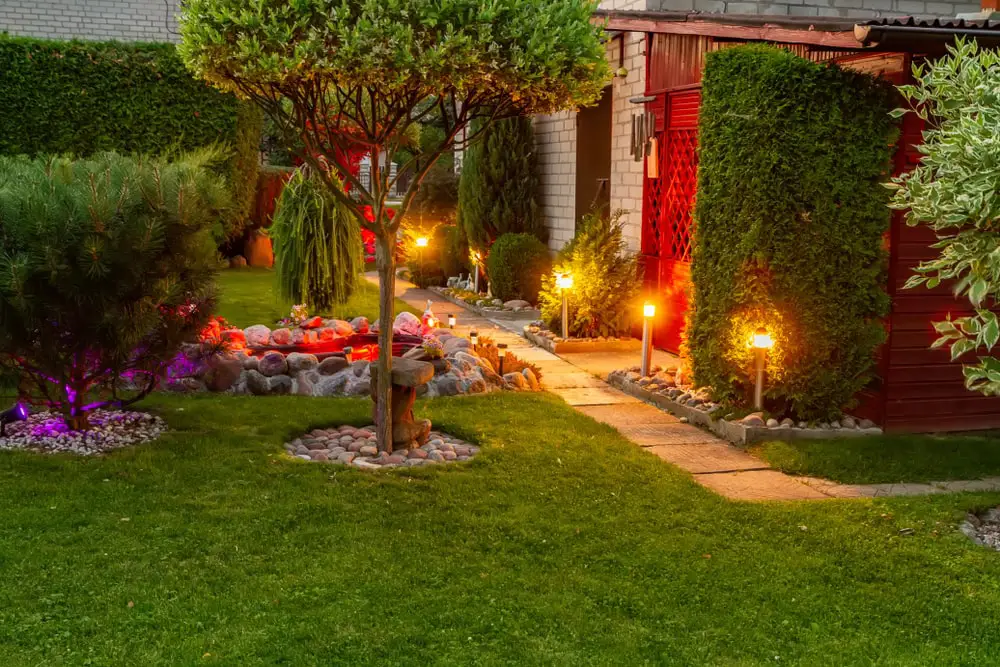Hilton Head Landscapes Fundamentals Explained
Hilton Head Landscapes Fundamentals Explained
Blog Article
Indicators on Hilton Head Landscapes You Need To Know
Table of Contents6 Easy Facts About Hilton Head Landscapes ShownSome Ideas on Hilton Head Landscapes You Need To KnowSome Ideas on Hilton Head Landscapes You Should KnowGetting My Hilton Head Landscapes To WorkAbout Hilton Head LandscapesUnknown Facts About Hilton Head LandscapesIndicators on Hilton Head Landscapes You Need To Know
Line produces all types and patterns and can be used in a variety of methods the landscape. Line in the landscape is developed by the edge between 2 materials, the outline or shape of a type, or a lengthy direct function. Lines are a powerful device for the designer due to the fact that they can be utilized to develop a limitless variety of forms and forms, and they regulate activity of the eye and the body.

Lines can have one or even more features, such as those explained below, yet they commonly serve various functions. Figure 1. Lines in the landscape - bluffton landscaping. The residential properties of lines determine how people react to the landscape, both emotionally and literally. Straight lines are architectural and powerful; they develop an official character, are usually related to a balanced layout, and lead the eye directly to a prime focus.
The Only Guide for Hilton Head Landscapes
Straight lines are most usually found in hardscape edges and material. Curved lines produce an informal, all-natural, loosened up character that is associated much more with nature and unbalanced balance. Rounded lines relocate the eye at a slower rate and add enigma to the room by creating hidden sights. Vertical lines relocate the eye up, making a room feel bigger.
Vertical lines in the landscape include tall, narrow plant material, such as trees, or tall structures, such as an arbor or a bird residence on a post. Straight lines move the eye along the ground aircraft and can make an area feel larger. Low lines are more restrained and develop a feeling of rest or repose.
The 9-Second Trick For Hilton Head Landscapes
Reduced lines are developed by low garden wall surfaces, pathways, and short bushes. Lines are used to draw kinds on a plan. In strategy view, they define plant beds and hardscape areas. Lines are likewise produced by the upright forms of constructed attributes and plant product. There are three key line types that produce type in the landscape: bedlines, hardscape lines, and plant lines.
Bedlines link plant product to your house and hardscape because the eye adheres to the line, moving the look with the landscape. Hardscape lines are developed by the edge of the hardscape, which defines the constructed structure. Line can also be created by long and slim products, such as a fencing or wall.
How Hilton Head Landscapes can Save You Time, Stress, and Money.
Form is found in both hardscape and plants, and it is typically the dominant visual element that spatially organizes the landscape and usually identifies the style of the garden. The form of structures, plant beds, and garden accessories likewise determines the general type style of the garden. Formal, geometric forms consist of circles, squares, and polygons.
Plants develop kind in the garden through their describes or silhouettes, but kind can additionally be specified by a space or unfavorable space between plants - bluffton landscaping (https://www.indiegogo.com/individuals/37931614). Circles can be complete circles, or they can be separated into half circles or circle segments and incorporated with lines to develop arcs and tangents
The 45-Second Trick For Hilton Head Landscapes
Circles are a strong style form due to the fact that read the article the eye is always drawn to the facility, which can be used to emphasize a focal factor or attach other forms. Circular types in hardscape and lawn panels.
The square type can also be segmented and previously owned continuously to create a grid pattern. Unlike circles, squares are stronger on the brink, which can be aligned or overlapped to develop distinct patterns and even more complicated kinds. Polygons are many-sided forms with straight edges. Triangles, for instance, are three-sided polygons.
Meandering lines usually mimic the natural program of rivers or streams and can be called smooth lines with deeply bent wavinesses. Twisting lines (Number 3) function well for paths, plant bedlines, and completely dry stream beds. Twisting lines can add passion and enigma to a garden by leading viewers around corners to discover new views and rooms.
Our Hilton Head Landscapes PDFs

Common plant forms are well developed and standardized, as form is the most consistent and well-known attribute of plants. Type can also be developed with the massing of plants, where the general mass creates a various form than an individual plant.
A very contrasting kind needs to be used with careone or more job well as a prime focus, yet too lots of wreak havoc. All-natural plant forms, instead than over-trimmed forms, should establish the mass of the composition. The relevance of total form is basically reliant on the seeing perspectivethe kind of a tree can appear rather various to an individual standing under the canopy versus viewing the tree from a range in an open area.
Rumored Buzz on Hilton Head Landscapes
Plant kinds also produce and specify deep space or open areas in between the plants, creating either convex or scooped kinds in deep spaces. High-arching tree branches commonly create a concave open space under the branches, and a rounded cover with reduced branches fills up the area to create a convex type in the open area under the tree.

Report this page